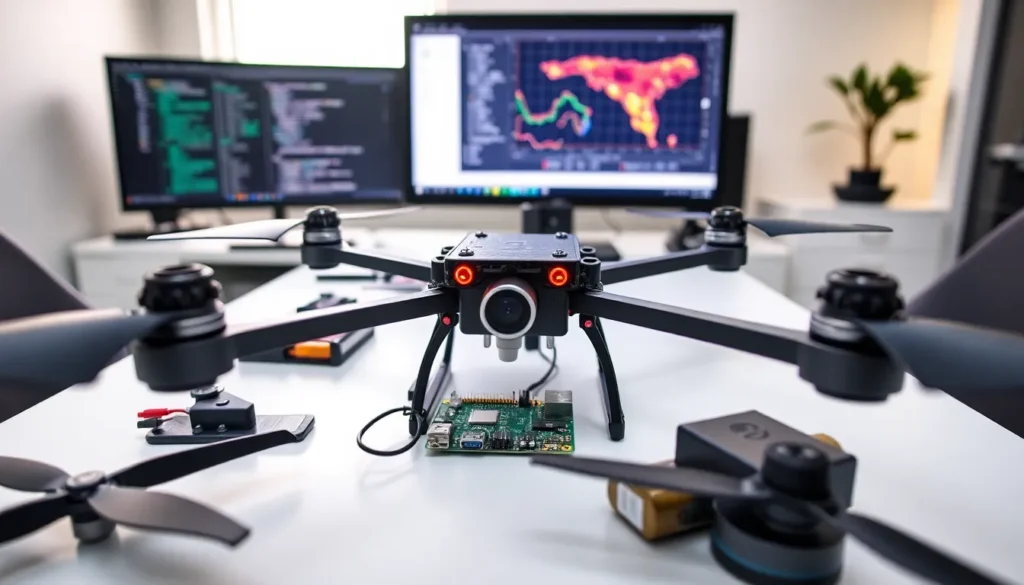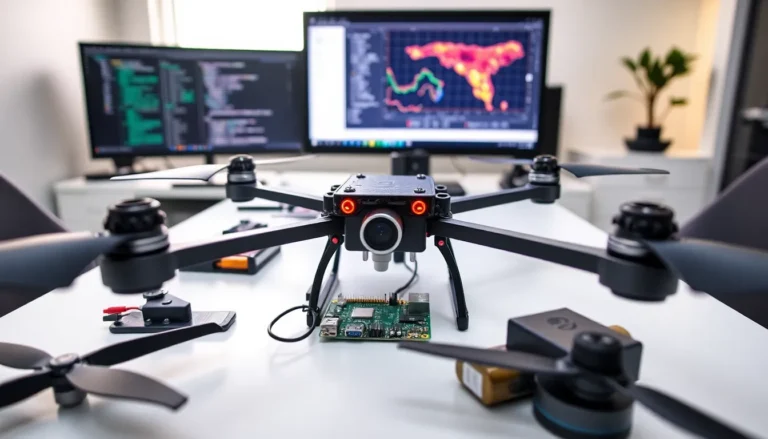Table of Contents
ToggleIn a world where technology evolves at breakneck speed, one can’t help but wonder: what’s the latest buzz? If you’re scratching your head, you’re not alone. Every day, innovations pop up like mushrooms after rain, some practical, others a bit more eccentric. Buckle up as we jump into the realm of technology now, where we’ll explore everything from artificial intelligence transforming mundane tasks to the Internet of Things integrating seamlessly into our daily lives. Let’s embark on this tech journey and discover what makes our digital age tick.
The Rise of Artificial Intelligence in Everyday Life

Artificial Intelligence is not just a buzzword anymore: it’s woven into the fabric of our daily routines. Everywhere you look, someone is leveraging AI to enhance productivity and streamline processes.
Impact of Machine Learning on Various Industries
Machine Learning, a subset of AI, is reframing the business landscape. Industries like finance, healthcare, and retail are experiencing seismic shifts. In finance, algorithms analyze market trends faster than a seasoned trader can blink. In healthcare, AI assists doctors by predicting patient outcomes and providing personalized treatment plans. Retailers harness AI for inventory management and customer recommendations, often with stunning accuracy.
AI-Powered Tools Shaping Personal and Professional Tasks
From quirky AI assistants that will remind you to buy groceries to sophisticated project management tools, AI-powered applications make our personal and professional lives more manageable. Think of tools like Grammarly for writing assistance or scheduling apps that can suggest meeting times based on everyone’s availability. Technology is no longer just about numbers: it’s about enhancing human experience.
The Role of AI in Enhancing User Experience
User experience, or UX, thrives on improving how we interact with technology. AI is at the heart of this evolution. It helps tailor experiences to individual preferences, ensuring users feel valued.
Imagine browsing a music streaming service that curates playlists just for you, or an e-commerce site that remembers your favorite brands? AI collects and analyzes data, making these personalized experiences possible. The more it learns, the better it becomes at meeting our needs, transforming mundane interactions into delightful engagements.
Connectivity and the Internet of Things (IoT)
In an age where everything connects, the Internet of Things prevails. IoT isn’t just a tech trend: it’s a lifestyle choice. Smart appliances, wearables, and interconnected devices are changing how we live.
Smart Homes and Their Increasing Adoption
Imagine walking into your house, and the lights turn on as if welcoming you home. Smart homes are gaining traction, with devices like smart thermostats, intelligent security systems, and voice-activated assistants proliferating. Homeowners relish the convenience and energy efficiency smart technology enables, making everyday life smoother and more enjoyable.
IoT in Healthcare: Advantages and Challenges
Healthcare, too, is tapping into the potential of IoT. Wearable devices monitor heart rates and track physical activity, relaying data directly to healthcare providers. Patients enjoy increased autonomy while doctors gain invaluable insights. But, challenges loom, especially concerning data privacy and security. As technology progresses, ensuring that personal health information remains secure is paramount.
Cybersecurity Trends: Safeguarding Our Digital Lives
As technology becomes a cornerstone of our lives, cybersecurity emerges as a priority. The need for robust security measures is undeniable in an era characterized by rising cyber threats.
Evolving Threats in Cybersecurity
Cyberattacks are more sophisticated than ever. Hackers continuously develop new tactics, making it essential for organizations and individuals to stay vigilant. Phishing schemes and ransomware attacks are just the beginning. Critical infrastructure operations face potential crippling threats, urging businesses and governments to fortify their security protocols.
Best Practices for Individuals and Organizations
Implementing solid cybersecurity measures is critical. Encourage organizations to use multi-factor authentication and promote regular software updates. For individuals, practicing caution when sharing personal information online could prevent becoming the next victim of a malicious attack. Knowledge is power in this digital landscape.
The Future of Work: Remote and Hybrid Models
The employment landscape is shifting away from traditional office spaces, giving way to remote and hybrid work models. Technology’s role in this transformation cannot be overstated.
Technology’s Role in Remote Collaboration
Virtual collaboration tools, from video conferencing platforms to project management software, are enhancing communication among remote teams. Employees can collaborate as effectively as they would in person, thanks to tools like Slack and Zoom. This shift not only allows for greater work-life balance but also enhances productivity and satisfaction.
Impact on Workforce Dynamics and Job Market
As organizations adapt to these new ways of working, many new job opportunities arise. Flexibility fosters innovation, expanding the talent pool across geographical boundaries. But, it also requires employees to develop new skills to navigate this digital workforce.
Emerging Technologies on the Horizon
The pace of technological innovation shows no signs of slowing. Several emerging technologies promise to reshape our future in extraordinary ways.
Blockchain Beyond Cryptocurrency
While often associated with Bitcoin, blockchain technology has applications beyond cryptocurrency. Industries are exploring blockchain for its potential in supply chain transparency, secure health records, and even voting systems. As more sectors adopt it, blockchain can revolutionize trust and verify authenticity.
5G Technology and Its Implications
5G technology is another game-changer, boasting faster speeds and lower latency. You can expect to witness innovations across sectors, from more efficient telemedicine to immersive virtual reality experiences. As 5G networks expand, our digital interactions will become smoother, enabling even more sophisticated applications.







